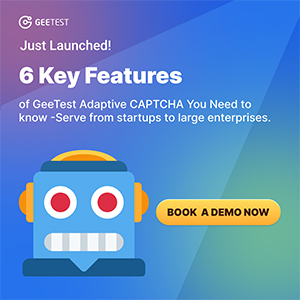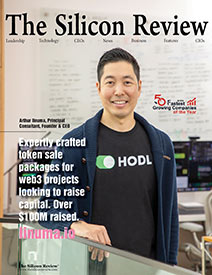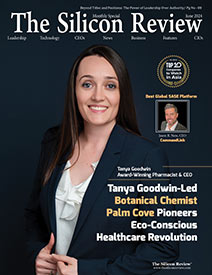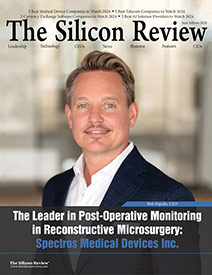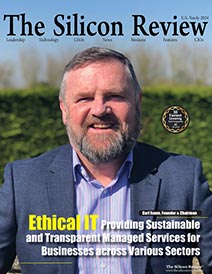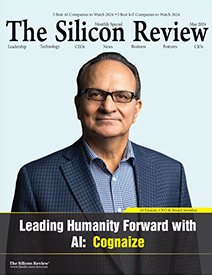30 Most Inspiring Leaders to Watch 2021
‘As a leader, it’s a forward-thinking data approach that has been my mantra and leading my team to believe in themselves, be curious, and ask questions’: Heather H. Wilson, CEO of CLARA Analytics
The Silicon Review
![]()
“I have been CEO of CLARA Analytics for six weeks, and with my team, we have already created three new products by diving into the data, the data science models, and the engineering.”
CLARA Analytics is the leading provider of artificial intelligence (AI) technology in the commercial insurance industry. The company improves claims outcomes in commercial insurance with easy-to-use AI-based products. Its product suite applies image recognition, natural language processing, and other AI-based techniques to unlock insights from medical notes, bills, and other documents surrounding a claim. CLARA’s predictive insight gives adjusters “AI superpowers” that help them reduce claim costs and optimize outcomes for the carrier, customer, and claimant.
CLARA Analytics was founded in 2016 and is headquartered in Santa Clara, CA.
Heather H. Wilson (CEO) Spoke Exclusively to The Silicon Review. Below is an Excerpt
Q. What’s your story?
I was a Rotary Scholar in college studying in Japan and Russia. My first entrepreneurial experience was starting an export-import business in Russia as the country was being westernized with several consumer products during my senior year of college in 1993. I was able to buy my first car because of that venture! After university, I “grew up” in consulting the first 15 years of my professional career with Deloitte and Andersen, to name a few, so constantly thinking about client service, problem-solving, and a customer-first mindset is in my blood. My transformative business approach and data analytical curiosity led me to work across several industries over the last 15 years, including healthcare, banking, insurance, and retail. I was the first Enterprise Chief Data Officer of AIG, the first female Enterprise Chief Data Officer of Citigroup, the first EVP Chief Data Scientist of L Brands, and Head of Innovation/Advanced Technology at Kaiser Permanente. I always embraced the changing role in companies and enjoyed building new opportunities. As such, I was always passionate about driving the data/analytics/AI agenda to build products, drive outcomes, solve problems, and deliver results. The fun and challenge of it all have been convincing my colleagues within organizations what is possible with data and analytics. It leads to amazing transformations; doing this created a strong muscle of influence, collaboration, and determination inside of me. The sense of achievement of creating a tangible solution is what I thrive on. It’s the same feeling as when I first learned coding in my early 20’s almost 30 years ago!
When I look back at my past success, it has come from being ahead of my time when inventing or applying a new concept for a business challenge. As a leader, it’s a forward-thinking data approach that has been my mantra and leading my team to believe in themselves, be curious, and ask questions. Presently, I have been CEO of CLARA Analytics for six weeks, and with my team, we have already created three new products by diving into the data, the data science models, and the engineering. I am a strong advocate for women in the workforce and diversity. I hope the examples I set with my leadership and collaborative approach inspire my team to set high goals and achieve them. I have also enjoyed mentoring many young executives and helping them to achieve their dreams. It’s important to pay it forward.
Q. What’s the greatest challenge you have faced? And how did you overcome it?
A big challenge as a leader is getting everyone as excited as I am sometimes about a concept or business opportunity. I have always been farther ahead on the curve with new product ideas than the people around me. That might sound boastful, but when your thinking is years ahead concerning new products, it can become frustrating when others cannot see what you see. That’s one reason why I’ve developed my influence collaboration muscle. I learned to pick small wins first when I come to a new company to ensure a successful outcome, gain trust with my colleagues and provide evidence-based results before tackling the elephant in the room. Then I build a relationship with my colleagues from there. In the past, before I learned this valuable lesson, my passion overrode my collaboration, and unfortunately, some of my ideas stayed “in the lab.”
Q. Tell me about the most difficult customer encounter you’ve experienced. And how did you handle it?
Right now, we face the opportunity of convincing a potential customer that we are not here to compete with their internal capabilities but to augment them. I say opportunity because it makes us more apprised at CLARA of what our story is and how to refine it. We are a partner to our clients, and our data products are an enabler for our clients. We are the brilliant spark plug making the parts in the data process move faster, streamlining the delivery and wealth of information, and delivering considerable savings to the end-user.
At CLARA, we think about the injured employee and employer. Our added value is not just that we have the most extensive contributory datasets of medical providers and attorneys across the country or production-ready AI, or a real-time, recalibrated interface for the Claims Adjusters to manage complex Workers Comp claims across the lifecycle – we have an end to end solution. We add value by integrating everything into an end-to-end solution for carriers, brokers, and self-insureds. We are here to deliver actionable AI to the claim adjuster’s desk. We do it by partnering with Commercial/Casualty Line CEOs, Chief Claims Officers, Heads of Data Science, and IT.
Claims ecosystems can be tricky to get right across all the functions inside organizations. Many companies are struggling to implement AI in the last mile so it can bring results to the bottom line. We try to make it easy with our API service and implement our solution no matter what the customer’s environment looks like. Our solution permeates across many functions within a claims organization. If we don’t have all parties at the table and bought in, it can be a more challenging opportunity to realize the full potential of CLARA’s ROI and easy implementation.
![]()
Q. Could you describe your typical management style and the type of employee that works well with you?
As a leader, I bring a lot of energy and commitment to everything I do. I love collaborating with people who bring the same. I roll up my sleeves and dig in. People who are fully engaged in the task at hand and can think forward to anticipate what’s next work well with me. Some people describe themselves as “detail-oriented” and others as “strategic thinkers.” I think of myself as both and look to hire those who are that way too. Growing a successful start-up is a team sport. With lean resources plus battling a pandemic, everyone must be a productive part of the team. I’m constantly cheering the team on, and I love it when others do the same. I find that teams work most effectively when everyone is on the same page and willing to help one another. I’ve valued these qualities in my teammates throughout my career and as a CEO at the helm at CLARA more now than ever.
Q. Who do you look up to and why?
My CEO Hero is Katherine Graham. In 1972 she became the first CEO of the Washington Post and the first female CEO of a Fortune 500 company. She was never taken seriously by her colleagues, and in the beginning, due to this, she even doubted herself. In the end, she persevered and paved the way during the start of the women’s movement. This movement fueled her to become a strong, decisive leader, and at this crucial time, Katherine inaugurated gender equality in the workplace.
There is also a generation of women who did not get the chance to be at the helm during their careers, and these women were not just in the business world. Katherine Johnson, whose calculations of orbital mechanics was critical to sending astronauts to space. Another person I admire is Grace Hopper. She devised the theory of machine-independent programming languages and became one of the US Navy’s first rear-admirals. I wonder what these women would have accomplished in the business world if they had the chance.
Another woman whom I just learned about recently is Wally Funk. She is an inspiration to me for her dedication to a purpose and dream. She was an early applicant to become an astronaut and even outperformed John Glenn on some physical and intellectual tests in preparation. She was denied the chance after NASA canceled the program to develop female astronauts. Just recently, her dream became a reality at 82 years old aboard Jeff Bezos’ New Shepard flight Blue Origin rocket.
There are many men I’ve looked up to for inspiration in my career as well who have been staunch supporters of mine: Don Callahan supported me in my career at Citigroup, as did George Halvorson at Kaiser Permanente and Bob Benmosche at AIG. Each of these men looked beyond gender and gave me immense opportunities based on my performance and energy.
Q. What can you tell us about CLARA’s product suite?
CLARA is one-of-a-kind. No one in the Workers Comp insurance space offers an end-to-end solution of ingesting client data daily, scoring claims with various models, and using them to advise claims adjusters as to the best course of action. Our CLARA Triage product assesses a claim’s potential complexity from its origination, so the best-suited adjuster is assigned. “CLARA Treatment” finds the health care providers who are the most effective at getting the injured worker healthy. “CLARA Litigation” recommends an attorney whose track record in handling similar cases is best-in-class. And our CLARA MSP Compliance product addresses the complexity of identifying and filing for Medicare reimbursement on the portion of a claim that Medicare is responsible for.
Q. About CLARA Analytics, how efficiently does the company improve claims outcomes in commercial insurance?
At CLARA, we are proud to be an AI company that delivers significant returns on our customers’ investments in a matter of months. Some of our customers are up and running in three months, and their savings begin right away. Within only six months of implementation, many see ROIs of 50 percent and higher, translating to millions in savings each year. And these aren’t just our numbers. Many of our clients have conducted extensive ROI analyses themselves. When many insurance companies and their vendors struggle to show positive returns from AI investments, at CLARA, we let the financials tell the story beyond helping to get our customer’s injured workers back to health and wellness.
Q. What’s your company’s point of differentiation?
CLARA is unique because we help get employees back to work sooner and save companies millions. This is good for them, their employers, and the customers they serve. At CLARA, it starts with our data. We have 75 billion dollars of workers comp claims in our CLARA data lake, which our clients have contributed, and it grows every day. This is the largest and only existing database in the country. When we look for insights into the nuances of injury claims, size does matter. CLARA’s customers benefit significantly from data models customized to their needs and include the insights gleaned from our massive dataset. But our competitive advantages at CLARA don’t end there. Because injury claims are our sole focus, CLARA has developed a deep understanding of the complexities, and we are continuously looking for fresh insights to share with our customers. Our focus at CLARA allows us to have teams of CLARA data scientists, data engineers, systems specialists, and software designers that most insurance companies cannot afford to dedicate to one set of problems.
Q. From your perspective, how is the industry you serve currently evolving? And what are the trends in the different categories?
Data-driven automation is where the industry is headed. Aside from pricing accuracy, insurance is a cost-efficiency game. For decades the industry’s leaders have leveraged technology to reduce costs and build scale. The same trends are in play today and will be tomorrow, but now the emphasis is on data and artificial intelligence to augment the capabilities of claims adjusters, underwriters, policy administration personnel, and others. But despite a relentless focus on this area, many companies are disappointed in their progress.
In some cases, their data isn’t of sufficient breadth, depth, and quality to support automation. In others, their data scientists may develop sophisticated models, but implementation is stopped short by legacy systems, ineffective data pipelines, and lack of end-user adoption. At CLARA, we’ve enabled our customers to overcome these data challenges. CLARA works to condition their data for use and effectively integrate into a customers’ environment regardless of its level of sophistication.
Q. Can you provide us with one or two success stories describing the challenges your clients faced and how your solutions helped them overcome those challenges?
At CLARA, we have successfully partnered with some of our clients to win innovation awards. Amerisure, a leading commercial insurance provider, won the Impact Award from the Novarica Insurance Technology Research Council. Their CEO cited how working with CLARA has saved them more than
3.0 million dollars in claims expenses and reduced the duration of the average claim by 4.4 percent, all within six months of starting to use our products. More importantly, the VP of Claims Operations said working with CLARA “improves on the service promise Amerisure makes to its agencies and policyholders.” That’s most rewarding to us at CLARA that we are helping our customers fulfill their mission to serve customers, policyholders, and injured workers.
A Pioneer in Artificial Intelligence and Analytics
Heather H. Wilson is the Chief Executive Officer of CLARA Analytics. She has over a decade of executive experience in data, analytics, and artificial intelligence. Ms. Wilson was named 2015 Insurance Woman of the Year by the Insurance Technology Association.
